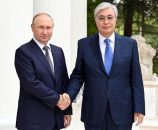Mohammad Jamil
At least 39 Maoists were killed on 22-23 April 2018, in an alleged encounter with Indian Security Forces in district Gadchiroli on the north bank of river Indravati that divides Maharashtra and Chhattisgarh. The Maoists admitted the loss and vowed to take revenge. Local human rights organizations raised questions on the authenticity of the Gadchiroli incident, as none of police personnel was killed nor received injuries. They termed it a planned mass murder and a cold-blooded killing of Maoists. However, mass killings of Maoists by Indian security forces gave gone unnoticed in international media. Less than a week after security forces gunned down 39 Maoists in Gadchiroli, elite Greyhound commandos crossed the Chhattisgarh border and shot dead eight rebels in a forest region of Bijapur. In March 2018 also, 10 left-wing extremists of the Telangana State Committee of CPI (Maoist) were killed in what they called an encounter.
However, sociologists are of the firm opinion that Indian caste system has blighted India, which did not allow formation of ‘one India’ for centuries. Some ascribe the reason to different backgrounds of the people their languages and cultures. According to 1931 census by the British Indian government there were more than 350 languages, and scores of cultures. But language and cultural diversity is not the reason for ‘many Indias’. Maloy Krishna Dhar, a former bureaucrat, police official and who was inducted in Central Intelligence Bureau, in his treatise titled ‘Indian Fault Lines: Perceptions and realities’ gave the detailed analysis of various problems in the country and the real situation on the ground. He wrote: “India is perhaps the only country that has simultaneous presence of ethnic insurgency, ideological terrorism and religious fracas leading to great social divide”.
The author concluded his treatise by writing: “We live in ‘Many Indias’ – India of the Dalit Hindus and Buddhists, India of the Hindu Backward and Other Backward Classes, Upper Caste Hindus, Scheduled Caste Hindus, ethnic tribals, linguistic diversities and of course fresh demands from the Muslims to give general reservation to them or at least to the SC, Dalit and BC, OBC Muslims. Are we in the process of having ‘Many Indias’ and permanently losing ‘One India’ for which the Indians fought against the British? Are we reverting back to an India that was divided into different polities with fragile geographic and cultural bonds in 9th and 10th century? How long the present fragile constitutional bonds would hold together? The perception of ‘Asamudra Himachal’ Bharat appears to be folklore”.
In the wake of insurgency in 2009, the Central government of India had banned the Communist Party of India (Maoist), terming it a terrorist organisation. It invoked Section 41 of the Unlawful Activities (Prevention) Act against the extremist outfit. Many States, including Andhra Pradesh, Madhya Pradesh and Chhattisgarh, had declared the CPI (Maoist) an unlawful association and a terrorist organization. Bihar, Orissa, Jharkhand and Tamil Nadu had done so under the Unlawful Activities (Prevention) Act. In these eastern regions, Naxalites have established their writ running large in hundreds of villages. The CPI (Maoist) is now clubbed with other banned terror groups such as the Pakistan-based Lashkar-e-Toiba and the Sri Lankan Liberation Tigers of Tamil Eelam, with its offices and bank accounts sealed.
While addressing the interstate conference, former prime minister Manmohan Singh during his first stint had said that biggest threat to India was the Maoists. The fact remains that the Naxalite movement is a growing threat, as 13 out of 28 states are now affected in one way or another by the insurgency. Because of inept policies of Indian government law and order situation in Chhattisgarh, Maharashtra, Madhya Pradesh, Eastern Uttar Pradesh, Jharkhand, West Bengal, western Orissa and Bihar is hopeless. India also faces insurgencies in Nagaland, Mizoram, Assam, Bodoland, Manipur and Tripura where it is using heavy-handed methods and use of brutal force to quell the unrest, which fact has been censured by human rights organizations including Amnesty International.
On 22nd February 2018, Institute of Policy Studies Islamabad had organized an international seminar at Marriot Hotel titled “Pluralism VS Exclusionism: The Case of Rising Extremism in India”. The speakers’ including a prominent Indian journalist, Syed Iftikhar Gilani delivered a presentation on “Growing Extremism in India: Glimpses and Impressions”. Reportedly, the presentation was not well-received in India, as Indian Foreign Office Joint Secretary and Spokesperson Raveesh Kumar summoned DNA (Indian based newspaper) editor in-Chief Dwapaian Bose and lodged protest against Iftikhar Gilani’s presentation at IPS seminar. It was observed that India is spreading hate based ideology and Hindutva extremism under Modi’s government; changes are being made in text books and school syllabi to tarnish Muslim leaders image, and to remove traces of Mughal rule in India and also portray Christians as anti-nationals etc.


